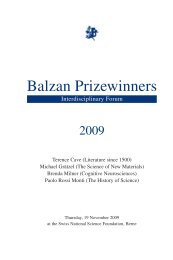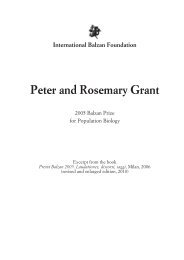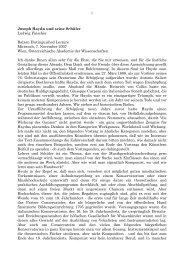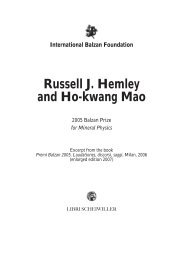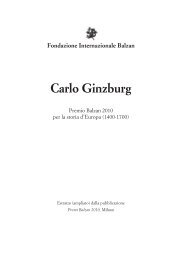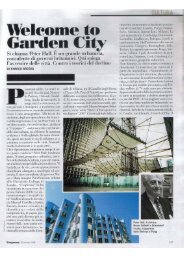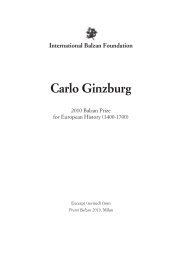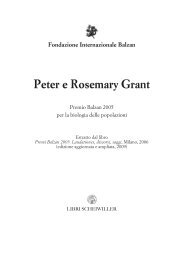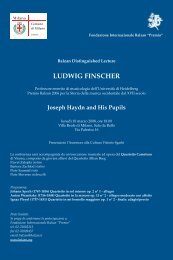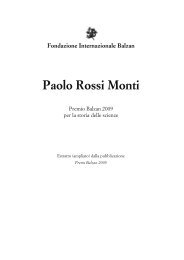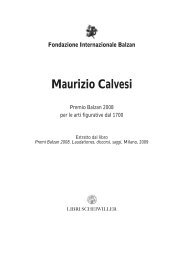International Balzan Foundation Luigi Luca Cavalli
International Balzan Foundation Luigi Luca Cavalli
International Balzan Foundation Luigi Luca Cavalli
You also want an ePaper? Increase the reach of your titles
YUMPU automatically turns print PDFs into web optimized ePapers that Google loves.
<strong>Luigi</strong> <strong>Luca</strong> <strong>Cavalli</strong>-Sforza<br />
and wanted to get to see the Atlantic Ocean. I did not ask why, but I can understand<br />
them: I, too, am motivated by very strong curiosity. However, the move<br />
from food gathering to food production, which started in very distant places at<br />
around the same times, about ten thousand years ago, brought about an almost<br />
exponential growth in population to a thousandfold increase which is now nearing<br />
its limits. Are we ready for a new crisis: expansion outside Earth, self-destruction?<br />
The spread of agriculture from its place of origin was very slow. P. Menozzi, A.<br />
Piazza and I have been able to calculate its rate fairly exactly in Europe, and it<br />
was possible to explain it by the combination of two demographic phenomena,<br />
growth and emigration, to generate population expansion from the area of origin.<br />
Population growth was made possible by the increased availability of food,<br />
and as soon as it reached a new level of saturation it caused geographic expansion<br />
by migration, mostly of family groups or small social nuclei, to neighbouring<br />
areas offering potentially fertile soil. In research in collaboration with archaeologist<br />
Albert Ammerman, we suggested the name of demic diffusion for<br />
this process. It took some time to have this hypothesis accepted by archaeologists,<br />
especially in northern Europe and the USA, because it was totally opposite<br />
to the trend of thought that had developed there, in opposition to ideas popular<br />
in the nineteen-twenties. Clarke, who was mostly responsible for these ideas, explained<br />
every archaeological variation by the movement of people. When, after<br />
the war, the pendulum swung to the opposite pole, the hypothesis of migration<br />
disappeared. Only traders moved, carrying with them products that have been<br />
found and used by archaeologists to describe such expansions : a fashion now<br />
called indigenism. But the idea that it was really the growth and migration of<br />
farmers who brought farming around the nuclear area has been tested by showing<br />
that there are gradients of genes of Middle Eastern origin across Europe,<br />
which follow rather precisely the archaeological paths of the penetration of<br />
farming. Dates and rates of expansion are also in agreement with genetic and<br />
demographic calculations. The observed genetic gradient could have formed<br />
only if, in addition to the demic diffusion of farmers, there was adoption of<br />
farming by local hunter-gatherers, either by marriage or by acculturation.<br />
Cosmologists and astronomers are also afflicted by the problem of the history of<br />
the world being unable to be repeated. One advantage they have is that they can<br />
make much more precise measurements of their observations, and theoretical<br />
predictions to test their hypotheses. Biology is beginning to follow this example.<br />
33



